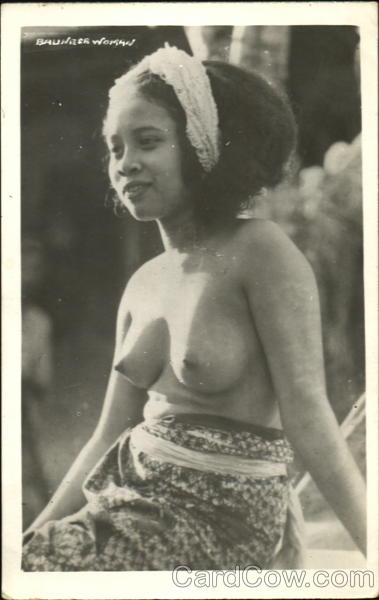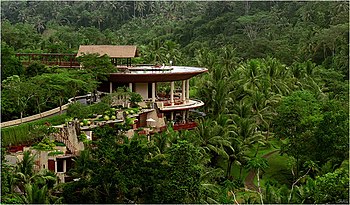7,7-dichlorobicyclo[4.1.0]heptane (7,7-dichloronorcarane
| NaOH,Pr3N |
Synthesis of 7,7-dichlorobicyclo[4.1.0]heptane (7,7-dichloronorcarane) from cyclohexene |
| Reaction type: | addition to alkenes, elimination, cycloaddition |
| Substance classes: | alkene, carbene, chloroalkane |
| Techniques: | stirring with magnetic stir bar, adding dropwise with an addition funnel, distilling under reduced pressure, evaporating with rotary evaporator, shaking out, extracting, filtering, use of an ice cooling bath, heating with oil bath |
Instruction (batch scale 100 mmol)
Equipment
100 mL three neck round bottom flask, reflux condenser, addition funnel with pressure
balance, heatable magnetic stirrer, magnetic stir bar, thermometer for inside of the flask,
separating funnel, destillation apparatus, rotary evaporator, oil bath, ice bath, vacuum pump
Substances
cyclohexene (bp 83 °C) 8.21 g (10.1 mL, 100 mmol)
chloroform (bp 61 °C) 48.0 g (32.7 mL, 400 mmol)
sodium hydroxide 16.0 g (400 mmol)
tri-n-propylamine (bp 156 °C) 0.14 g (0.19 mL, 1.0 mmol)
water 16 mL
ethanol (bp 78 °C) 1 mL
n-pentane (bp 36 °C) 120 mL
sodium sulfate for drying about 5 g
sodium chloride about 18 g
Reaction
Into a 100 mL three neck round bottom flask equipped with a reflux condenser addition
funnel, thermometer for measuring the inside temperature and magnetic stir bar, 8.21 g
(10.1 mL, 100 mmol) cyclohexene 0.14 g (0.19 mL, 1.0 mmol) tri-n-propylamine, 48.0 g
(32.7 mL, 400 mmol) chloroform and 1 mL ethanol is added. The mixture is cooled to 0 °C
with an ice bath, then under stirring and further cooling in the ice bath a solution of 16.0 g
(400 mmol) sodium hydroxide in 16 mL water is added through an addition funnel. The
mixture should be stirred vigourously during the next 20 minutes at 0 °C. After this time the
mixture is further stirred during 1 hour at room temperature and 3 hours at 50 °C.
Work up
Chloroform is evaporated with a rotary evaporator, then the residue is transferred with about
50 mL water and 30 mL n-pentane into a separating funnel. The organic phase is separated,
the aqueous phase is further extracted three times with 30 mL pentane. If an emulsion is
formed the aqueous phase is saturated with NaCl. The combined organic phases are dried over
sodium sulfate. The solution is filtered from sodium sulfate and the solvent is evaporated with
a rotary evaporator, yielding a nearly colourless liquid as crude product. The crude yield is
14.6 g. The crude product is distilled under reduced pressure.
Yield: 13.6 g (82.3 mmol, 82%), colourless liquid; bp 77 °C (11 hPa)
Equipment
100 mL three neck round bottom flask, reflux condenser, addition funnel with pressure
balance, heatable magnetic stirrer, magnetic stir bar, thermometer for inside of the flask,
separating funnel, destillation apparatus, rotary evaporator, oil bath, ice bath, vacuum pump
Substances
cyclohexene (bp 83 °C) 8.21 g (10.1 mL, 100 mmol)
chloroform (bp 61 °C) 48.0 g (32.7 mL, 400 mmol)
sodium hydroxide 16.0 g (400 mmol)
tri-n-propylamine (bp 156 °C) 0.14 g (0.19 mL, 1.0 mmol)
water 16 mL
ethanol (bp 78 °C) 1 mL
n-pentane (bp 36 °C) 120 mL
sodium sulfate for drying about 5 g
sodium chloride about 18 g
Reaction
Into a 100 mL three neck round bottom flask equipped with a reflux condenser addition
funnel, thermometer for measuring the inside temperature and magnetic stir bar, 8.21 g
(10.1 mL, 100 mmol) cyclohexene 0.14 g (0.19 mL, 1.0 mmol) tri-n-propylamine, 48.0 g
(32.7 mL, 400 mmol) chloroform and 1 mL ethanol is added. The mixture is cooled to 0 °C
with an ice bath, then under stirring and further cooling in the ice bath a solution of 16.0 g
(400 mmol) sodium hydroxide in 16 mL water is added through an addition funnel. The
mixture should be stirred vigourously during the next 20 minutes at 0 °C. After this time the
mixture is further stirred during 1 hour at room temperature and 3 hours at 50 °C.
Work up
Chloroform is evaporated with a rotary evaporator, then the residue is transferred with about
50 mL water and 30 mL n-pentane into a separating funnel. The organic phase is separated,
the aqueous phase is further extracted three times with 30 mL pentane. If an emulsion is
formed the aqueous phase is saturated with NaCl. The combined organic phases are dried over
sodium sulfate. The solution is filtered from sodium sulfate and the solvent is evaporated with
a rotary evaporator, yielding a nearly colourless liquid as crude product. The crude yield is
14.6 g. The crude product is distilled under reduced pressure.
Yield: 13.6 g (82.3 mmol, 82%), colourless liquid; bp 77 °C (11 hPa)
Operating scheme
Equipment |
GC: pure productcolumnSE-54, L= 25 m, ID 0.32 mm, DF 0.25 µm (Macherey & Nagel)inletGerstel KAS, injector: 250°C, split injection 1:20, 0.15 µLcarrier gasN2, pre-column pressure 62 kPa, 1.04 mL/minoven80 °C (1 min), 10 °C/min --> 250 °C (30 min)detectorFID, 275 °Cintegrationpercent concentration calculated from relative peak area
| 1H-NMR: 7,7-Dichlorobicyclo[4.1.0]heptane | |||
| 500 MHz, CDCl3 | |||
| delta [ppm] | mult. | atoms | assignment |
| 1.12-1.36 | m | 4 H | C4-H, C5-H |
| 1.61-1.71 | m | 4 H | C3-H, C6-H |
| 1.88-1.98 | m | 2 H | C1-H, C2-H |
| 7.26 | s | 1 H | CHCl3 |
| 3C-NMR: 7,7-Dichlorobicyclo[4.1.0]heptane | |||
| 125 MHz, CDCl3 | |||
| delta [ppm] | assignment | ||
| 18.9 | C4, C5 | ||
| 20.2 | C3, C6 | ||
| 25.8 | C2, C1 | ||
| 67.4 | C7 | ||
| 76.5-77.5 | CDCl3 | ||
| IR: 7,7-Dichlorobicyclo[4.1.0]heptane | |||
| [Film, T%, cm-1] | |||
| [cm-1] | assignment | ||
| 2944, 2855 | aliph. C-H valence | ||
| 796 | C-Cl valence | ||
 amcrasto@gmail.com
amcrasto@gmail.com
............
Ubud, Bali, Indonesia.
Ubud - Wikipedia, the free encyclopedia
https://en.wikipedia.org/?title=Ubud
Ubud is a town on the Indonesian island of Bali in Ubud District, located amongst rice paddies and steep ravines in the central foothills of the Gianyar regency.




- UbudTown in Indonesia
- The town of Ubud, in the uplands of Bali, Indonesia, is known as a center for traditional crafts and dance. The surrounding Ubud District’s rainforest and terraced rice paddies, dotted with Hindu temples and shrines, are among Bali’s most iconic landscapes. Ancient holy sites include the Tirta Empul temple complex, intricately carved Goa Gajah (“Elephant Cave”) and Gunung Kawi with its rock-cut shrines.
- Weather: 27°C, Wind E at 14 km/h, 79% Humidity
- Local time: Thursday 6:54 PM
- Getting there: 9 h 10 min flight. View flights
Bali: Avilla Opens Bale Udang Indonesian Restaurant in Ubud
Food and Beverage
Following the the success of its Bale Udang Mang Engking Indonesian
restaurant in Kuta, Avilla Hospitality has opened a second Indonesian
eatery in Ubud.
Bale Udang Engking Bali in Ubud. Photo Credit: Avilla Hospitality.
Set amid rice paddies with a view of the surrounding emerald green
mountains, Bale Udang Engking Bali in Ubud is built almost entirely of
bamboo atop a large fish pond.
Bale is Indonesian for an open-air structure made of bamboo.
More Than a Restaurant
Bale Udang Mang Engking at night. Photo Credit: Avilla Hospitality.
With its innovative design and magnificent setting,
Bale Udang Mang Engking is more than a restaurant. There are also
recreational facilities, a main hall, a souvenir shop, the list goes on.
Signature Dish
Yummy Indonesian cuisine at Bale Udang Mang Engking in Bali. Photo Credit: Avilla Hospitality.
Udang Bakar Madu, Sup Kelapa Udang, and Gurame Bumbu
Cobek are among the yummy Indonesian dishes on the menu. Prawns are the
signature ingredient in many of the dishes.
Bale Udang Mang Engking will offer 20% off ala carte menu items through the end of February 2014.
Where
Jl. Rya Goa Gajah, Banjar Teges Kanginan, Desa Peliatan, Ubud, Bali, Indonesia. Telephone: : +62 361 978 754. Website: Bale Udang Ubud.
Your Response Wanted!
Have you ever been to Bali? What was your most memorable experience?
Would you recommend the island to others as a travel destination?
Please post your comment in the Comment Box below or on Facebook at the following link: Accidental Travel Writer on Facebook. And don't forget to LIKE us while you're there!
Travel Tips


kacangbakar.wordpress.com
Highly recommended food in Ubud (must try!): Babi Guling Bu Oka (BBQ
pig). The food and environment are experience by itself. It is not open
everyday, ...
theatlasheart.com
The one place that made me reevaluate my initial perception of Bali was
Ubud. Ubud is what I was expecting Bali to be: a bit more laid back,
hippie, ...

Air Route to Bali
Bali is a small island among the thousands of islands in the territory
of Indonesia. The total area of Bali, about 5636.66 km2 with a
population of not less than 4 million people. The island is a nature
blessed with white sandy beaches, mountains with natural tropical
forests, and lakes are very intriguing.
Bali has a main entrance through Ngurah Rai International Airport,
located in southern Bali, 13 km south of Denpasar, the capital of Bali.
It is Indonesia's third-busiest international airport.
Puri Saren Agung (Water Palace) in central Ubud
Goa Gajah originates from the 9th century
Gunung Kawi, Tampaksiring
Hot springs at Tirta Empul, Tampaksiring


Rice terraces near Ubud
Puram Dalem dance performance
Legong dance performance
Inside Ubud Market
Babi Guling is a very popular dish for Balinese as well as tourists, and
you can find it at most traditional markets and at roadside eateries as
wel
The quite remarkable Four Seasons Hotel in the Ayung Valley, near Ubud
///////
. DRUG APPROVALS BY DR ANTHONY MELVIN CRASTO .....FOR BLOG HOME CLICK HERE
DRUG APPROVALS BY DR ANTHONY MELVIN CRASTO .....FOR BLOG HOME CLICK HERE
.










No comments:
Post a Comment